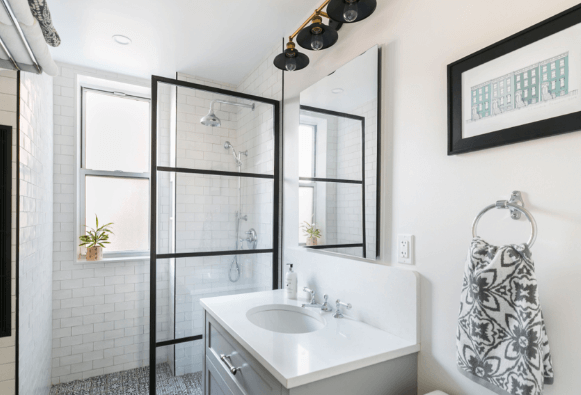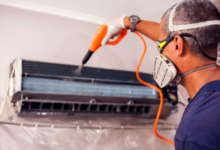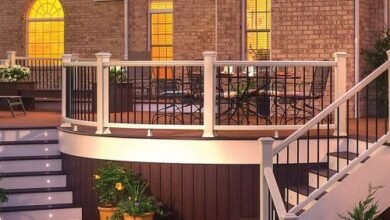Budgeting for Your Bathroom Renovation: Tips from Experienced Renovators

Renovating your bathroom can be an exciting yet daunting task. It’s a chance to create a space that reflects your style, meets your needs, and enhances your home’s value. However, without proper budgeting, this project can quickly spiral out of control. This article provides valuable insights and tips from experienced bathroom renovators to help you effectively budget for your bathroom renovation.
1. Understand the Scope of Your Renovation
Before diving into budgeting, it’s essential to define the scope of your renovation. Are you planning a complete overhaul, or just a few cosmetic changes? Understanding the extent of your renovation will help determine your budget.
Complete Renovation
If you’re planning a complete renovation, you’ll need to account for:
- Demolition and removal of old fixtures
- Plumbing and electrical work
- New cabinetry, countertops, and flooring
- Tiles and wall finishes
- Lighting and ventilation
- Professional labor costs
See also: How to Prepare for a Sale?
Cosmetic Changes
For minor updates, such as painting, replacing fixtures, or changing the flooring, your budget will be less extensive. This could include:
- New paint and wallpaper
- Updated light fixtures
- New faucets and hardware
- Minor plumbing changes
2. Set a Realistic Budget
Once you understand the scope of your renovation, it’s time to set a realistic budget. Experienced renovators recommend a budget that considers both your financial capacity and the costs associated with the renovations. Here’s how to approach it:
Determine Your Financial Limit
- Assess Your Finances: Review your savings, potential financing options, and any loans you might consider.
- Consider Future Value: Renovations should ideally enhance your home’s value. Research the return on investment (ROI) for bathroom renovations in your area to help guide your budget.
Budget Breakdown
A typical bathroom renovation budget breakdown might look like this:
- 60% on labor and materials
- 30% on fixtures and finishes
- 10% for unexpected expenses (more on this later)
3. Research and Gather Quotes
Gathering quotes from multiple contractors is crucial for budgeting. Experienced renovators emphasize the importance of research to find the best price for quality work. Here are some tips on how to do this effectively:
Get Multiple Quotes
- Contact Several Renovators: Reach out to at least three contractors to get detailed quotes for your project.
- Compare Costs: Analyze the quotes, looking at the breakdown of costs for materials and labor.
Ask for Recommendations
- Word of Mouth: Ask friends, family, or neighbors who have recently renovated their bathrooms for recommendations.
- Online Reviews: Use platforms like Google, Yelp, and Angie’s List to read reviews and ratings of local renovators.
4. Prioritize Your Needs vs. Wants
Understanding the difference between needs and wants can help keep your budget in check. Here’s how to approach this:
Identify Essential Features
- Must-Haves: Determine which features are necessary for functionality (e.g., a toilet, sink, shower).
- Aesthetic Enhancements: Consider elements that enhance beauty but aren’t essential (e.g., high-end faucets, elaborate tile designs).
Make Compromises
When faced with budget constraints, be prepared to make compromises. For instance, you may want a luxury shower system but can opt for a more affordable faucet style that still meets your needs.
5. Factor in Unexpected Costs
Renovations often come with unexpected surprises. It’s vital to budget for these potential costs to avoid financial strain. Here are some common unexpected expenses:
Hidden Structural Issues
- Water Damage: Older bathrooms may have plumbing leaks or water damage that requires additional repairs.
- Electrical Updates: Upgrading old wiring to meet current codes can add to costs.
Permits and Inspections
Depending on your location, you may need to budget for permits and inspections, which can range from a few hundred to several thousand dollars.
Emergency Fund
It’s wise to set aside at least 10% of your budget as a contingency fund for unexpected expenses. This cushion will help you manage surprises without derailing your project.
6. Choose Materials Wisely
The materials you choose will significantly impact your budget. Experienced renovators recommend being strategic about your selections:
Quality vs. Cost
- Invest in Durability: While it may be tempting to go for cheaper materials, investing in quality can save you money in the long run by reducing the need for repairs or replacements.
- Explore Alternatives: Look for cost-effective alternatives that mimic high-end materials. For instance, laminate countertops can resemble granite without the hefty price tag.
Shop Smart
- Compare Prices: Visit multiple suppliers and compare prices before making your selections.
- Look for Sales: Keep an eye out for seasonal sales, discounts, and clearance items to save on materials.
7. Plan for Labor Costs
Labor costs can consume a significant portion of your renovation budget. Here’s how to manage these costs effectively:
Hire the Right Professionals
- Skilled Labor: Invest in experienced contractors, electricians, and plumbers to ensure high-quality work.
- Check Credentials: Verify licenses and insurance to avoid hiring unqualified workers.
Consider DIY Options
If you’re handy or have experience in home renovations, consider tackling some tasks yourself. Simple jobs like painting or installing fixtures can save you money while allowing you to put a personal touch on the project.
Hire for Complexity
For complex tasks, such as plumbing and electrical work, always hire professionals. Trying to save money by doing it yourself could lead to costly mistakes and safety hazards.
8. Monitor Your Budget Throughout the Renovation
As your renovation progresses, keep a close eye on your budget to ensure you stay on track. Here are some tips to help you monitor your expenses effectively:
Track Expenses
- Use a Spreadsheet: Create a spreadsheet to track all costs associated with your renovation, including materials, labor, and any additional expenses.
- Update Regularly: Regularly update your spreadsheet to reflect actual costs versus your initial budget.
Communicate with Contractors
- Regular Check-Ins: Maintain open communication with your contractors to discuss budget updates and any necessary changes to your original plan.
- Clarify Changes: Ensure you understand any budget changes and the reasons behind them to avoid surprises.
9. Plan for Post-Renovation Costs
After the renovation is complete, there may be additional costs to consider. Here’s what to plan for:
Furnishing and Decorating
Once your renovation is complete, you may want to purchase new towels, shower curtains, or decorative items to complete the look of your new bathroom.
Maintenance and Repairs
Remember to factor in ongoing maintenance costs. High-quality materials may require less upkeep, but it’s still wise to budget for cleaning supplies and occasional repairs.
10. Enjoy Your New Bathroom!
After all the planning, budgeting, and hard work, take the time to enjoy your newly renovated bathroom. This space should reflect your personal style while being functional and inviting.
Celebrate Your Accomplishment
Share your renovation journey with friends and family, and consider hosting a small gathering to showcase your new space. Not only will this allow you to enjoy your hard work, but it can also serve as inspiration for others looking to undertake similar projects.
Future Considerations
Keep in mind that home values fluctuate, and your bathroom renovation could significantly enhance your home’s appeal in the future. Should you decide to sell your home, an attractive, functional bathroom can be a major selling point.
Conclusion
Budgeting for a bathroom renovation requires careful planning and consideration. By understanding the scope of your project, setting a realistic budget, gathering quotes, and prioritizing your needs, you can create a beautiful and functional bathroom without breaking the bank. Remember to monitor your expenses throughout the renovation process and factor in unexpected costs. With these tips from experienced renovators, you can successfully navigate your bathroom renovation and enjoy the benefits of a transformed space.







